Overview
ICT Programme
ICT in Teaching & Learning
ICT is an integral part of teaching and learning in YHPS. Across subjects, teachers leverage ICT to enhance lessons, increase efficacy and engage students with the purpose of deepening students’ learning. We aim to achieve quality ICT-enabled learning in every level and nurture students with the appropriate dispositions to harness ICT for life-long learning.
Baseline ICT Standards (New Media Literacies)
The standards has its focus on the acquisition and application of technical skills to support the creation of digital content and various modes of interaction. It details the skills, knowledge, attitude and values (SKAV) that students should apply and demonstrate when harnessing ICT for learning and interacting; curating digital content; connecting and communicating digitally; and creating digital multimodal products.
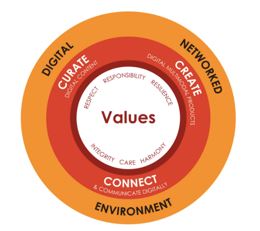
New Media Literacies have been defined as the abilities to curate, create and connect with others in the digital networked environment. Curate, Create and Connect are ways of interacting in the digital networked environment. Regular engagement in these interactions will enable students to develop an understanding of the social practices governing the digital networked environment.
The six values at the core of MOE’s 21st Century Competencies Framework undergird the values that students should have. These values shape their participation in the digital networked environment.
The six values are:
| Respect | Believes in one’s self-worth and the intrinsic worth of all members in the community |
| Responsibility | Recognises the duty to oneself and community, fulfilling one’s responsibilities with love and commitment |
| Resilience | Possesses the emotional strength to persevere in the face of challenges Manifests courage, optimism, adaptability and resourcefulness |
| Integrity | Upholds ethical principles and has the moral courage to stand up for what is right |
| Care | Makes discerning choices and moves beyond self-interest to improve the community |
| Harmony | Appreciates diversity and seeks social cohesion in the new media ecology |
At the end of their six-year education in Yuhua Primary School, a student would have acquired these competencies:
| 1. | The student is able to conduct internet searches and organize the digital information for ease of retrieval, while recognizing copyright regulations governing the use of digital information. |
| 2. | The student is able to verify the accuracy, credibility and currency of a piece of information. |
| 3. | The student is able to select and put together different media elements to construct a digital artefact, while making informed choices with regard to how to use information ethically. |
| 4. | The student is able to exchange digital information with others synchronously and asynchronously, while observing proper etiquette. |
| 5. | The student is able to manage the digital footprint he/she makes when sharing information online. |
Developing Future-ready Learners
F.L.I.G.H.T.@1656 is a signature two-pronged programme that engages, enhances and extend students’ learning experiences. Students get to synthesise their knowledge and create digital learning artefacts that value-add to their learning. Customised tasks are curated to bring forth level-appropriate New Media Literacies (Baseline ICT Standards), Project Work Skills as well as English Language literacy application.
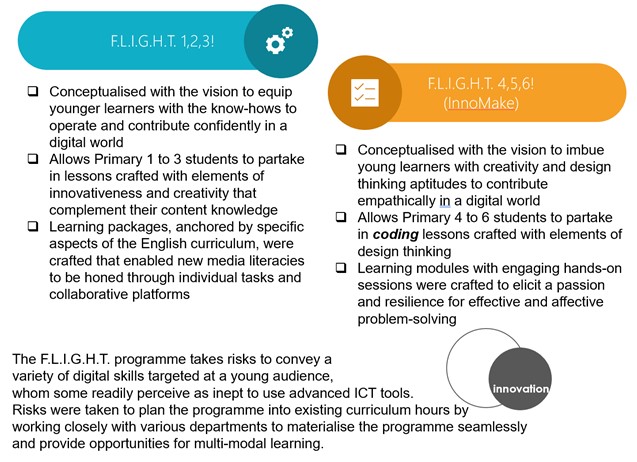
F.L.I.G.H.T. 1,2,3! is the foundation of the whole-school F.L.I.G.H.T.@1656 programme to drive ICT skills and innovative learning experiences for the student. As this component targets the younger learners in our school, we gave them a less abstract setting to work on and tap on their learning content from their English Language curriculum as a springboard to challenge them to more innovative learning experiences and outcomes.
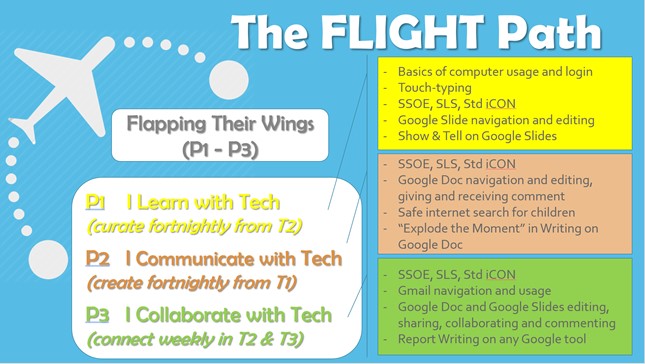
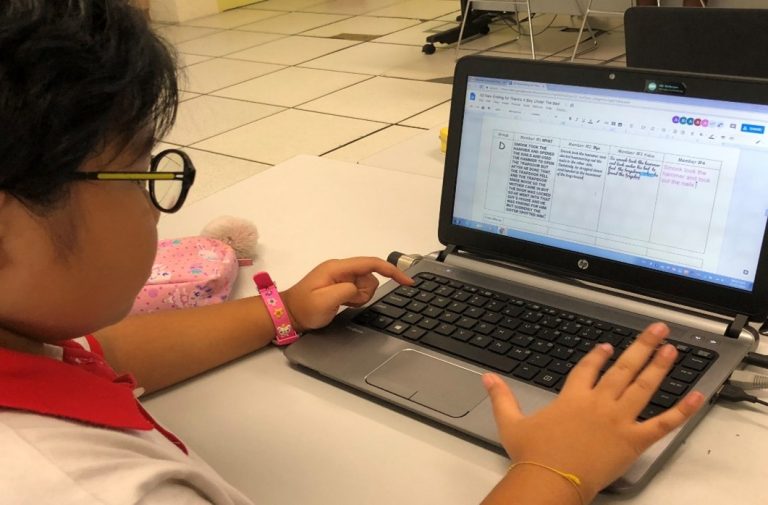
A student working on the Google Doc where students collaborate using the online tool to create their own ending to the STELLAR Unit “There’s A Boy Under The Bed”.
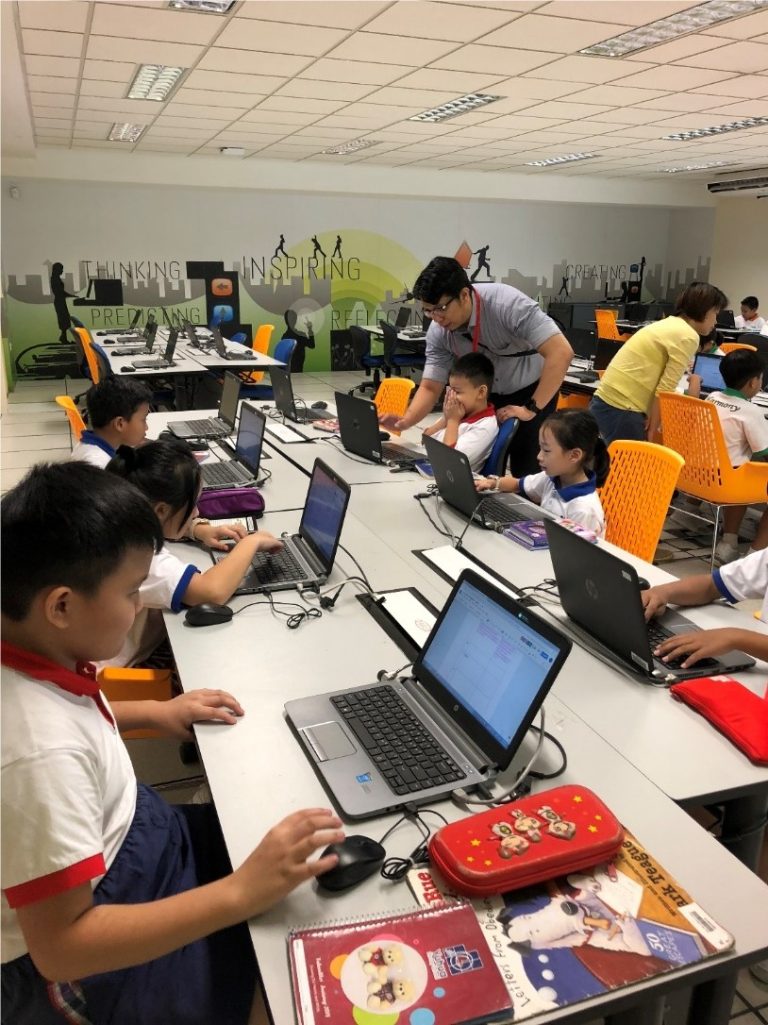
The students here are working remotely to access shared documents and give individual inputs, with their teacher’s assistance, to value-add to a group task.
F.L.I.G.H.T. 4,5,6! is the next stage to drive innovative and critical thinking skills via coding-based lessons and challenges. As students have had experience with F.L.I.G.H.T. 1,2,3!, we gave them a more abstract setting to work on or with. Equipped with micro:bits, students were given socio-environmental contexts to work with to bring forth empathy, passion and critical thinking in their solutions generation.
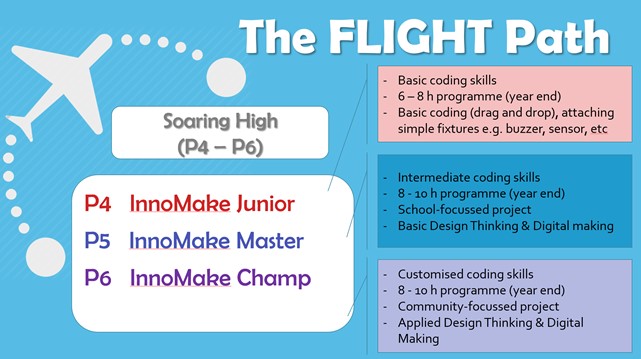
TechPlay 1,2,3!
TechPlay 1,2,3! is the enrichment arm of the F.L.I.G.H.T. programme, aimed at encouraging innovative and critical thinking through coding for the Primary 1 to 3 students. Carried out at the year’s end, the students get to experience coding via various means from tactile to line coding to enhance their thinking processes and pique their interest in this area over the formative years.
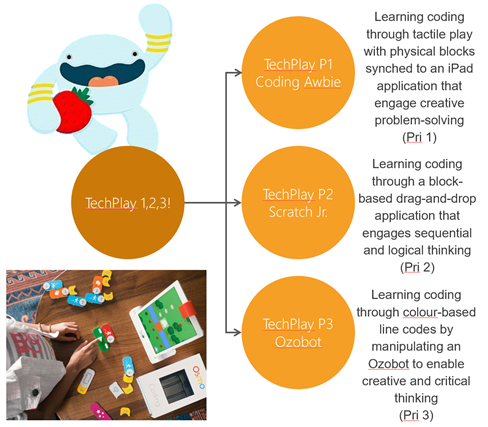
Code for Fun (CFF) Programme
This is an enrichment programme, jointly offered by IMDA and MOE, that aims to increase primary and secondary students’ exposure to computational thinking and making. It has been introduced to all Primary 5 students in our school from 2020 through a 10-hour programme that aims to develop an appreciation and interest in the core computational thinking and coding concepts.
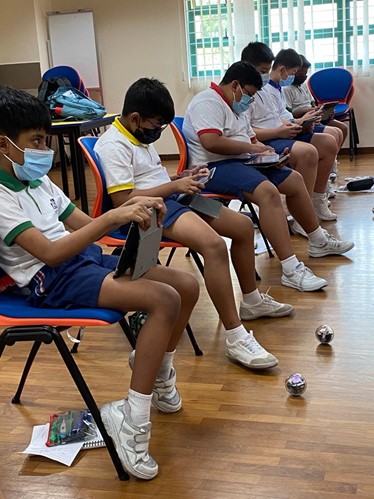
These Primary 5 students are using the iPads to code their Sphero units to execute various commands, that even includes a disco-dance function.
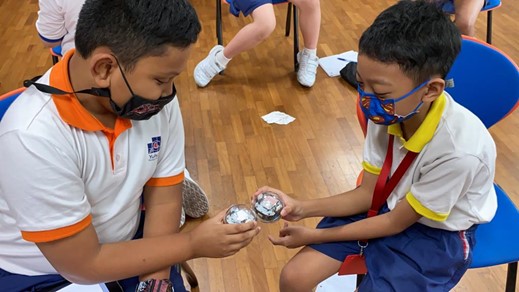
The students have coded these Sphero units to display icons that help them to play the ‘Scissors, Paper, Stone’ traditional game in innovative ways.
Forging Ahead with Design Thinking @ InnoWizz
InnoWizz is another signature programme in our school that enables a select group of students to partake in Design Thinking and understand more about effective yet affective problem-solving. This programme offers our students the opportunities to delve deep into a designer’s mindset through exploring and enabling the Design Thinking Framework and allows for the honing of creative and critical thinking that are grounded by empathy. They learn to be impactful contributors to tackle real-world issues.
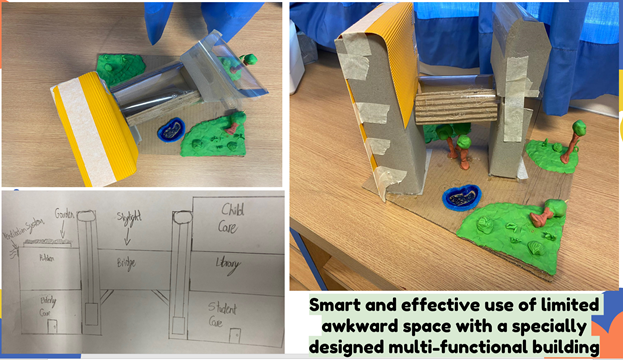
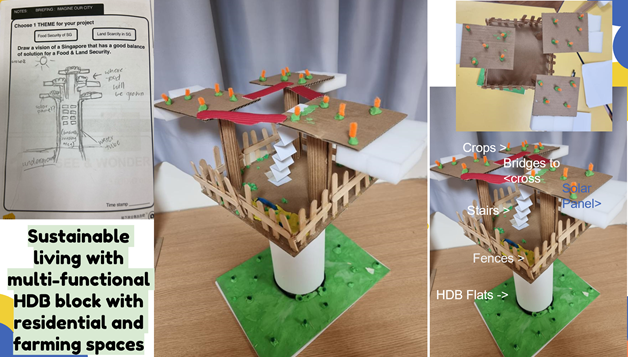
With these varied and whole-school approach, a strong culture of innovation and technological-readiness prevail among the students in the school.

